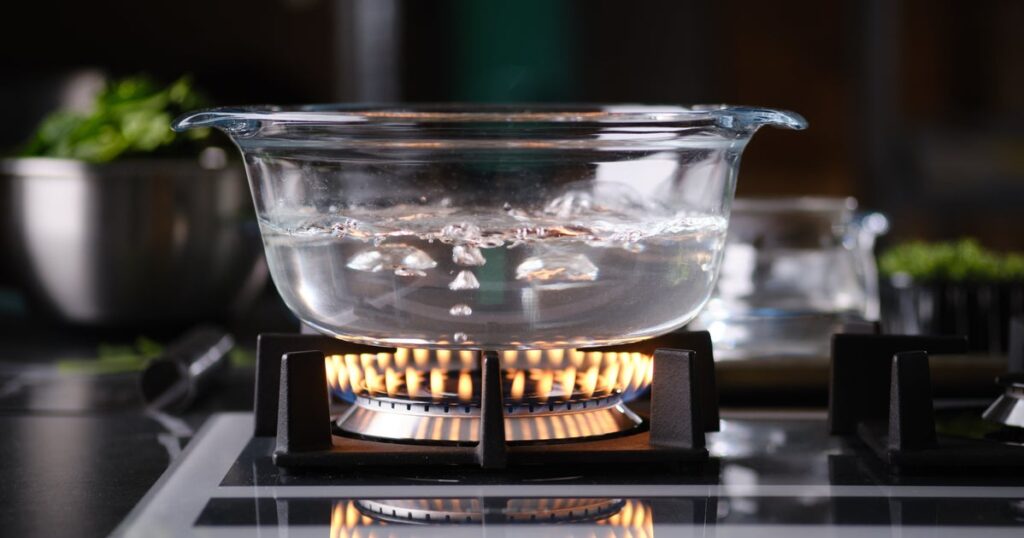Glass cookware is sleek, nostalgic and supposedly indestructible — until it shatters into a thousand pieces right as you serve dinner. I learned this the hard way when I pulled a bubbling shepherd’s pie out of the oven, only for my decades-old glass dish to explode across my counter in a shower of glass and gravy.
Turns out, I’m not alone. Those viral glass pots everyone’s been coveting on TikTok? Also shattering. Videos of broken cookware are racking up millions of views, and people are asking: Why does this happen? Is it poor manufacturing? Cheap glass? User error? To find out, HuffPost spoke with glassware experts about why glass cookware breaks, how to prevent it and how to choose safer options.
Why Does Glassware Break?
Despite my best efforts, I’m a bit of a klutz. My cookware inevitably shows the wear and tear of years of use: dings, mystery cracks and food stains that no amount of scrubbing can remove. But according to experts, those tiny cracks and chips might be more dangerous than they seem.
“Glass products can be damaged from everyday handling, for example, accidental banging of the glass cookware against other hard surfaces in the kitchen,” explained Dr. John C. Mauro, Dorothy Pate Enright professor of materials science and engineering at Penn State University. “The resulting damage consists of tiny cracks or scratches in the surface of the glass product. Any tensile stress that is later applied to the glass surface would then be amplified at the tips of these cracks; longer, sharper cracks are worse since they amplify the stresses more than shorter, blunter cracks.”
In other words, small chips and cracks weaken glass cookware over time, making it more susceptible to breaking. But pre-existing damage isn’t the only culprit — thermal shock is another major reason glass cookware can unexpectedly explode.
Why Are Those Viral Pots Shattering?
My For You Page has been flooded with videos of influencers filling delicate glass pots with brews of cinnamon sticks, orange wedges and jewel-toned liquids, crafting cozy elixirs that look straight out of a storybook. Aesthetically, these videos invoke a minimalist dream — sleek, modern and perfect for the camera. But when those videos end in an explosion, it’s likely the result of thermal shock.
“I’m not familiar with the glass pots shown [on TikTok], but they are clearly breaking due to thermal shock. They also appear to be nontempered,” he explained.
So what exactly is thermal shock, and why does it wreak havoc on glass cookware?
“Normal glass would rarely ‘explode,’” explains Dr. William LaCourse, professor of glass science at Alfred University. “However, thermally tempered glass (TTG) can show elements of this process due to its higher strength. The surface of TTG glass is under compression such that a small crack cannot propagate and cause failure. However, the interior is under tension, and if a crack does propagate and reach the interior, the crack will multiply into many cracks and the released energy causers multiple pieces of glass to be created. It can appear like an explosion. ”
Simply put, glass expands when it heats up and shrinks when it cools. If the temperature changes too fast — like pouring boiling water into a cold glass pot or submerging a hot glass dish in cold water — the outer layer contracts while the interior stays hot, creating tension. If the stress becomes too much, the glass can shatter.
How To Choose Glass Cookware
From stainless steel to cast iron, nonstick and even copper lined, there’s a pot or pan in my cupboard for whatever kitchen task I’m undertaking. The same goes for glass cookware — not all glass is created equal.
“There are two main types of glass cookware: borosilicate and tempered soda lime silicate,” Mauro explained. “The main advantage of borosilicate glass is its superior thermal shock resistance. Given its superior thermal shock performance, I recommend that consumers specifically look for borosilicate glass bakeware.”
That’s useful when scanning product details when shopping for something new, but what about the glass bakeware already in your kitchen?
Borosilicate glass was used in vintage Pyrex bakeware and is still used by many European brands. It’s more resistant to sudden temperature changes and often thinner and clearer than soda lime glass. OXO Good Grips and Corning Visions still make borosilicate cookware today.
Producers in North America most commonly use soda lime silicate glass. This thicker glass can have a slight greenish tint at the edges. While versatile for baking, serving and storing, it can be more vulnerable to sudden temperature changes.
The easiest way to check is to look at the manufacturer’s information — it should tell you whether it’s borosilicate or soda lime.
How To Prevent Glass Cookware From Breaking
Here’s how to keep your glass cookware in one piece:
-
Check for damage regularly. Even small chips or scratches can weaken glass. If you see any cracks, replace your cookware immediately.
-
Avoid sudden temperature changes. Never move a hot dish directly onto a cold surface, pour cold liquid into hot glass cookware or rinse hot glass with cold water.
-
Always place hot glass cookware on a dry, heat-safe surface such as a dish towel, trivet or cutting board.
-
Use the right glass for the job. Some glass bakeware is not meant for stovetop use — always check the manufacturer’s guidelines.
Read the full article here








